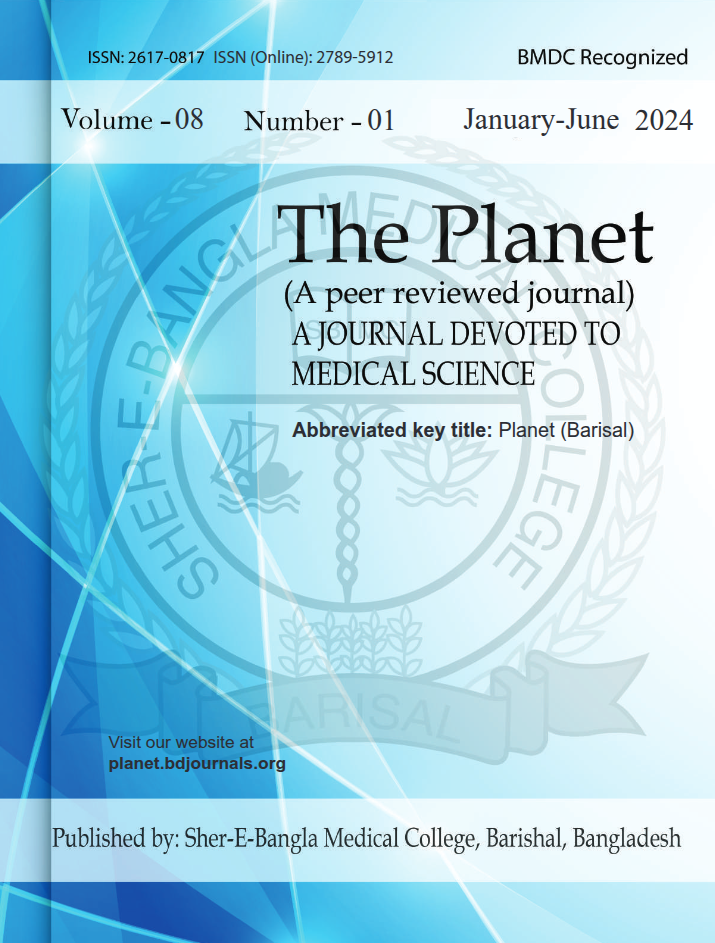Published 17-03-2024
Keywords
- Inferior turbinate surgery,
- inferior turbinectomy,
- sub-mucosal diathermy,
- Turbinoplasty
Copyright (c) 2024 The Planet

This work is licensed under a Creative Commons Attribution 4.0 International License.
How to Cite
Abstract
Background: Inferior turbinate hypertrophy is a common cause of chronic nasal obstruction, and a host of surgical procedures are available for its treatment. The optimum method is controversial due to conflicting outcomes and complications in different techniques. Methods & Materials: In this retrospective study, 1337 patients in the age range of 3-65 years with chronic inferior turbinate hypertrophy due to allergic rhinitis, rhinitis medicamentosa, and vasomotor rhinitis were evaluated from September 2015 to September 2024 at Jalalabad Rabeya-Medical College Hospital, Sylhet, Bangladesh and Ad-din Medical College Hospital, Mogbazar, Dhaka, Bangladesh. Patients underwent four different surgical procedures: sub-mucosal diathermy (SMD) (n=864), partial inferior turbinectomy (PIT) (n=427), CO₂ laser vaporization (n=21), and rhinoplasty (n=25) during the study period. The statistical analysis was done on SPSS v26.0 and the p<0.05 was considered significant. Results: SMD was the most frequently carried out procedure (64.6%), followed by PIT (31.9%). PIT was associated with higher complication rates in the elderly, with 20% post-operative bleeding and 35% atrophic rhinitis. CO₂ laser vaporization was associated with the highest recurrence rate (80%), while PIT and turbinoplasty had improvement rates of up to 93% for allergic and vasomotor rhinitis. SMD was the most cost-effective, while CO₂ laser was the most expensive. Concomitant septoplasty was performed in 41.1% of SMD and 55.0% of PIT. Conclusion: Turbinate surgery method must be individualized based on patient factors, etiology, and economics. PIT and turbinoplasty provided superior long-term outcomes but higher complication rates, while SMD provided a better safety profile and was cost-effective.



